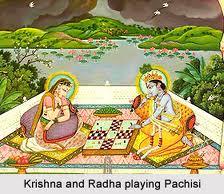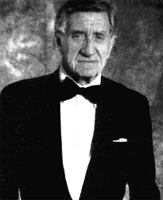|
| History |
 It is fitting that the precise origin of backgammon is unknown. No other game has proved as fascinating or has become as enduring a leisure activity. The constant historical references to backgammon demonstrate its universal excitement and enduring popularity.
It is fitting that the precise origin of backgammon is unknown. No other game has proved as fascinating or has become as enduring a leisure activity. The constant historical references to backgammon demonstrate its universal excitement and enduring popularity.
Shortly after World War I, British archaeologists excavated various biblical sites in Asia Minor and extracted board games decorated by a variety of delicate designs. These game boards have the earliest (but vague) resemblance to our contemporary game. Nonetheless, the subsequent game artifacts, discovered in the same region, came complete with playing pieces and dice.
During the period dominated by the Egypitan culture there is extensive evidence of related gaming boards, many personalized (and identifying the player as a specific Pharaoh or Queen). The royalty of Egypt, as well as their subjects, are portrayed regularly playing these boards. Their tombs were stocked with supplies of these games, perhaps in anticipation of an endless chouette with their accompanying retainers.

The Egyptians played their game with a dice box, presumably to reduce cheating opportunities as they gambled. Records show that this prudent equipment accessory was copied by both the Romans and the Greeks as they later developed their respective versions of the game.
The ruling class in Greece began their adaptation about a thousand years after the Egyptians. Even as recently as this point in history, there is still confusion in isolating the basic site of the game's origin. It seems that during this same period there were similar basic formats entertaining players in both India and China.
 Here again we find reminders of backgammon's universal attraction. This period records almost as many regional variations as opinions during an all-night chouette. The Indian game Pachisi, although starting each match with the men off the game board, in its format of play seems an obvious cousin to our contemporary form. Yet, if this Indian game is cited as the specific ancestor of backgammon, how do we refer to the others, played during the same period with comparable styles; SSANG-RYOUK (Southern China and Korea), SHWAN-LIU (Northern China), SAKA (Indo-China), etc.?
Here again we find reminders of backgammon's universal attraction. This period records almost as many regional variations as opinions during an all-night chouette. The Indian game Pachisi, although starting each match with the men off the game board, in its format of play seems an obvious cousin to our contemporary form. Yet, if this Indian game is cited as the specific ancestor of backgammon, how do we refer to the others, played during the same period with comparable styles; SSANG-RYOUK (Southern China and Korea), SHWAN-LIU (Northern China), SAKA (Indo-China), etc.?
European backgammon exposure was a clear fringe benefit of the Roman occupation program. From the early wall paintings there are continuous references to often excessive preoccupation with the game called "Tables." As Europe emerged from the dark ages, its literature and official recordings note endless references to the variations of backgammon.
This is when backgammon became subject to public condemnation. At various times, every section of the establishment got into the act. Even Jefferson joined military leaders, royalty, and clergy in forbidding or limiting play. It seems backgammon was so popular that it often caused negligence, dereliction of duty and/or the society drop-out equivalents to our "beatniks."

Prince Obolensky
Today we find that backgammon is ubiquitous throughout the Mediterranean countries, and the same consistant excitement is undoubtedly taking hold in America. In 1931 the New York Racquet Club, acknowledging popular pressure, formulated a responsible condification of rules of play. This occurred about ten years after someone introduced the "doubling" innovation to backgammon. The excitement and attraction of the game accelerated almost as phenomenally as the option to double the stakes.
Then in 1964, Oby destroyed the last vestiges of backgammon sanity or moderation. Prince Alexis Obolensky held the first international backgammon competition. That event (won by Charlie Wacker) and the similar events that followed gave the news media a valuable novelty to report with its jet-set players in exotic venues. With this publicity, the United States found and embraced the other side of the checker board. The resurgence of backgammon participation has become an unparalleled, ongoing growth phenomenon. And yet, today's backgammon population bears little resemblance to that enviable media image.
The attraction of backgammon has become so pervasive that the players represent every possible variation of age, income and occupation. No other leisure activity can offer the endless variety or flexibility of format. The inherent pleasure which is unique to backgammon presides whenever the dice are picked up. The unique thrill of competition in the final match at the world championships begins every time two people open their backgammon set at the beach.